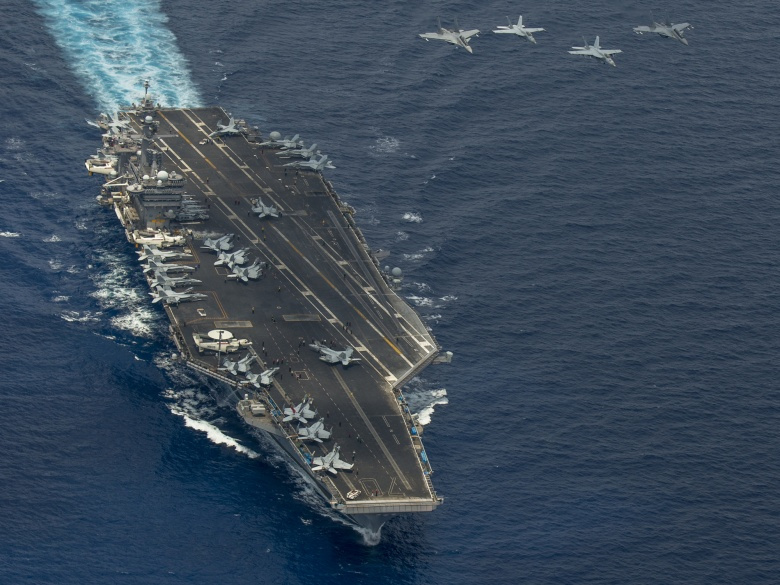Could Iran Sink a U.S. Navy Aircraft Carrier?
December 31, 2015

The United States is accusing Iran of testing rockets near one of its aircraft carriers in the Persian Gulf as it passed through the Straits of Hormuz. U.S. Central Command (CENTCOM) denounced the Iranian actions as “highly provocative.” But could Iran actually sink one of the U.S. Navy’s mighty flattops?
According to CENTCOM, Iranian Revolutionary Guard Corps (IRGC) naval vessels conducted live-fire drills less than 1,500 yards away from the Nimitz-class carrier USS Harry S. Truman (CVN-75), the Arleigh Burke-class destroyer USSBulkeley (DDG-84) destroyer and the French frigate FS Provence on Saturday. Moreover, civilian shipping traffic was in the area.
“Firing weapons so close to passing coalition ships and commercial traffic within an internationally recognized maritime traffic lane is unsafe, unprofessional and inconsistent with international maritime law,” said CENTCOM spokesman Commander Kyle Raines in a statement. He noted, however, that the Iranians were clearly not firing in the direction of the U.S. ships.
The Straits of Hormuz are a natural chokepoint for entry into the Persian Gulf. The channel is only about twenty-one miles wide at its narrowest while the shipping lane is about two miles wide. There is also a two-mile buffer zone on either side of the sea lane. The narrow straits are an ideal point for Tehran to make an attempt at blocking access to the Persian Gulf or to ambush allied naval forces—which indeed it attempted during the 1980s.
According to CENTCOM, the handful of IRGC vessels fired unguided rockets—which are not especially threatening to a vessel the size of USS Harry S. Trumanin small numbers. However, a lucky shot could have damaged the massive ship and the aircraft carried onboard. At such close range, even unguided weapons have a decent chance of hitting a target. At best, the Iranian boats might have achieved a “mission kill” on the U.S. and French vessels. It’s very unlikely that the IRGC vessels could have actually sunk Harry S. Truman or its escorts.
Iranian forces would have had to employ their small attack craft en masse to have a chance of doing real damage to the U.S. Navy task force—as the Millennium Challenge 2002 simulation demonstrated. Indeed, the IRGC has rehearsed such an attack on a mock-up of the USS Nimitz in the Straits of Hormuz in previously during an exercise called “Ninth Great Prophet.”
Those Iranian drills involved hordes of speedboats armed with cruise missiles and rockets, medium- and large-caliber torpedoes, sea mines, heavy machine guns and shoulder-fired surface-to-air missiles. Those swarming boats were coupled with shored-based missiles and other weapons. The U.S. Navy’s Littoral Combat Ship program—specifically, its surface warfare module—was developed to counter the Iranian swarming boat threat, but the service has yet to arm those vessels with an appropriate missile system.
